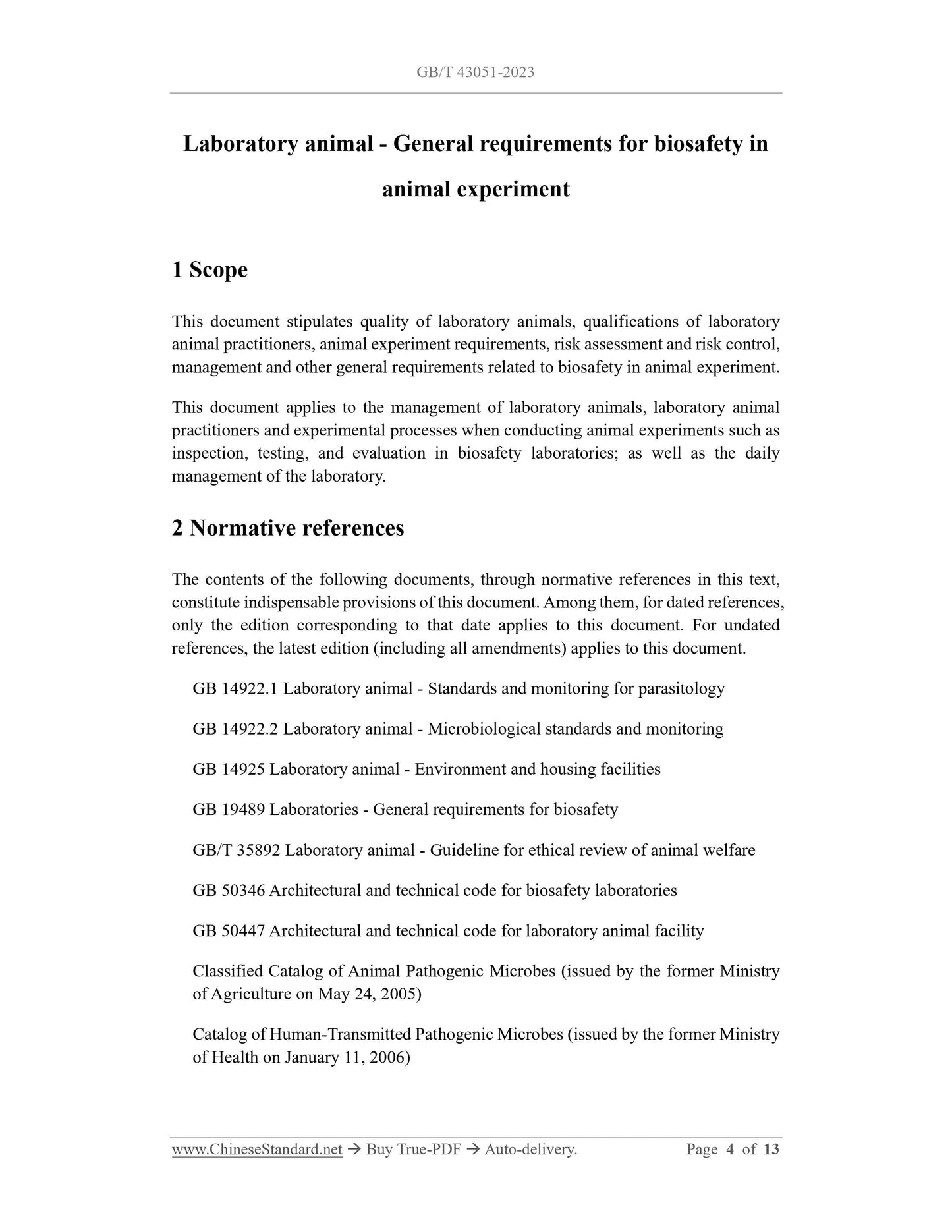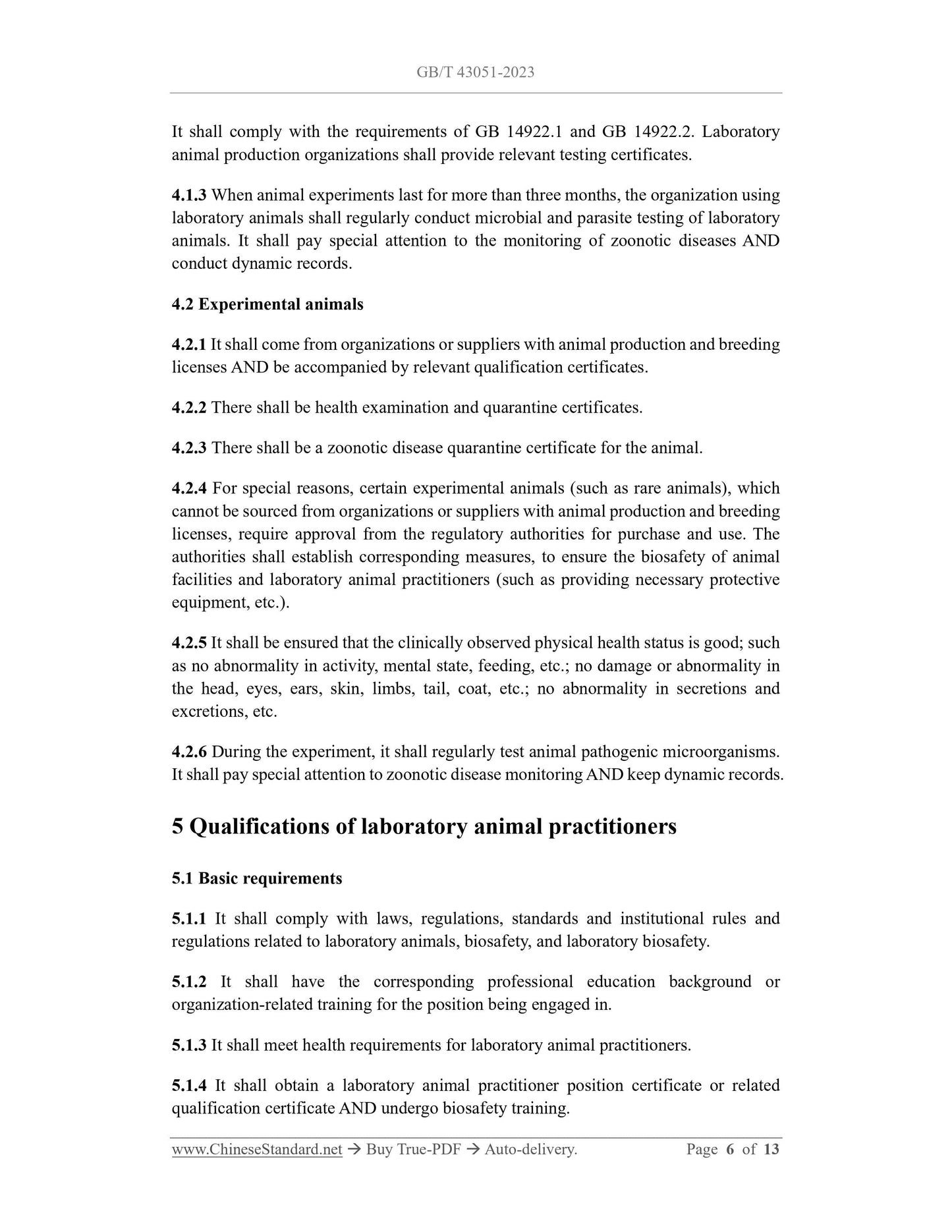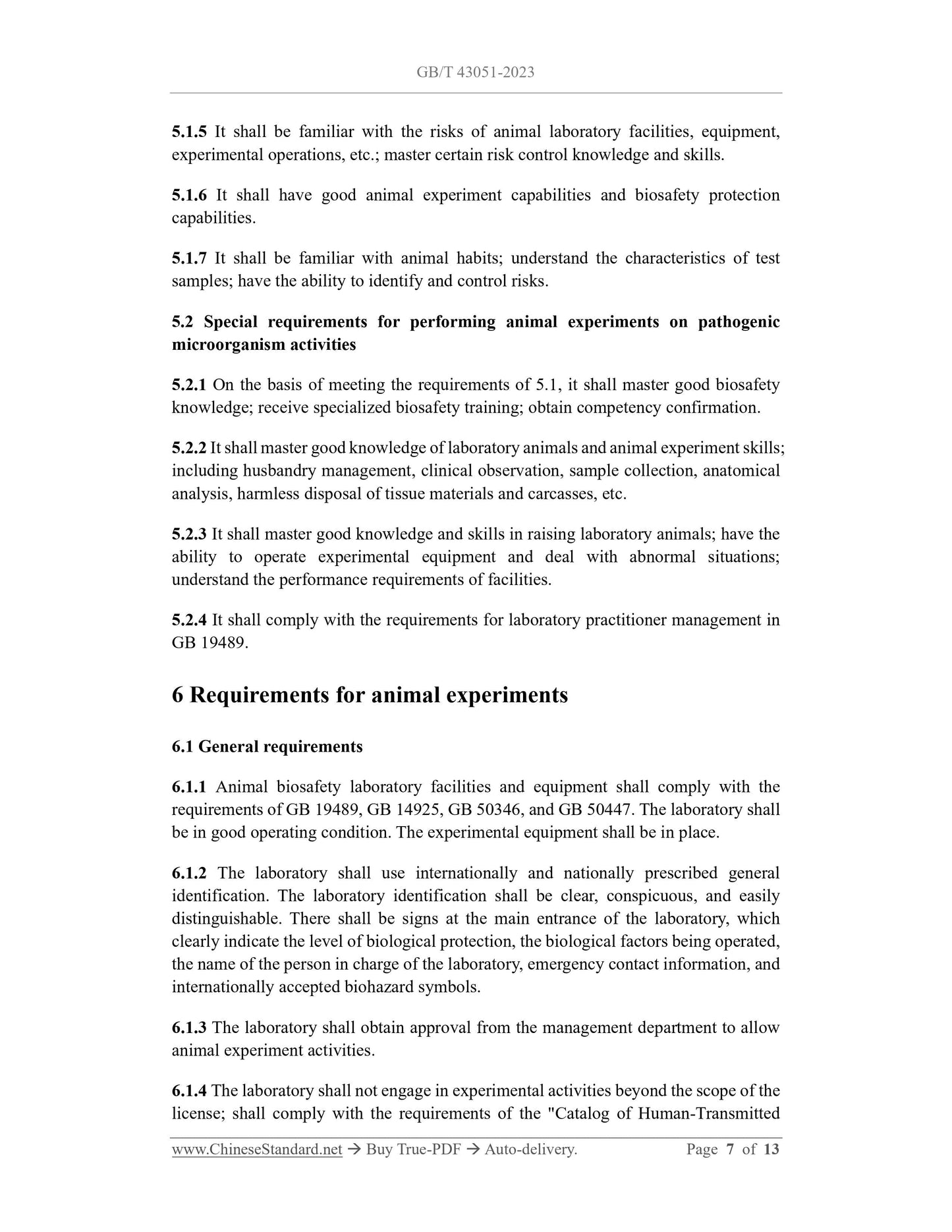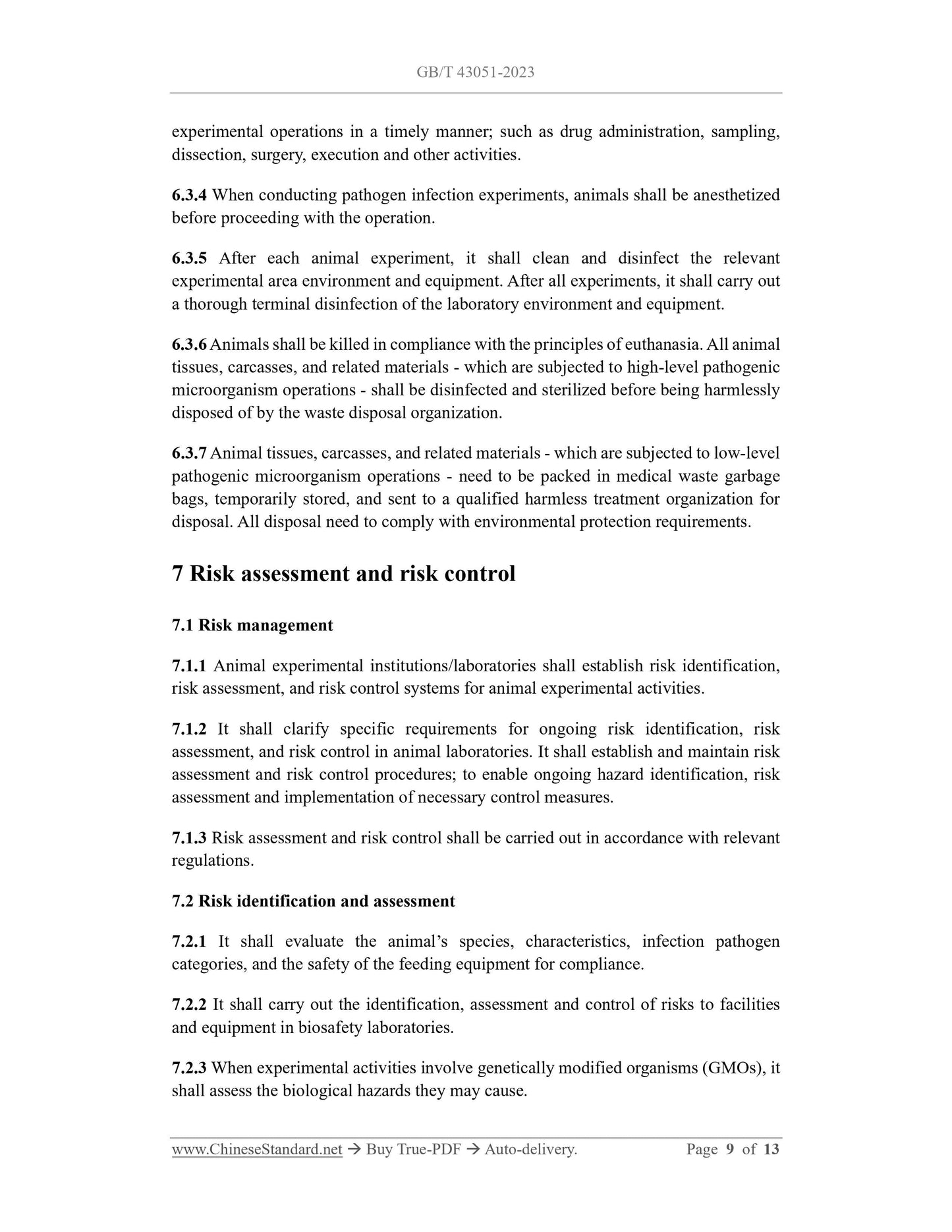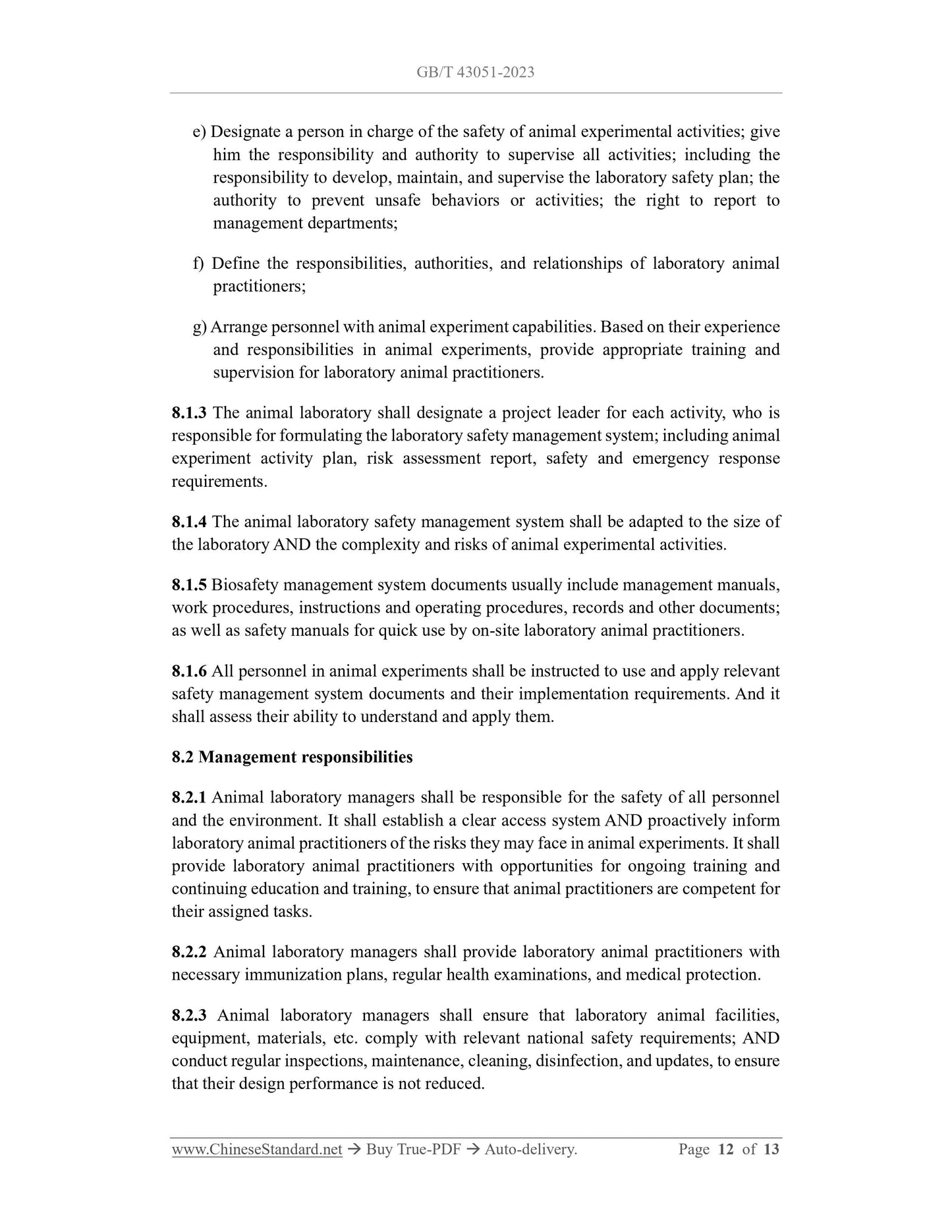1
/
of
8
www.ChineseStandard.us -- Field Test Asia Pte. Ltd.
GB/T 43051-2023 English PDF (GB/T43051-2023)
GB/T 43051-2023 English PDF (GB/T43051-2023)
Regular price
$165.00
Regular price
Sale price
$165.00
Unit price
/
per
Shipping calculated at checkout.
Couldn't load pickup availability
GB/T 43051-2023: Laboratory animal - General requirements for biosafety in animal experiment
Delivery: 9 seconds. Download (and Email) true-PDF + Invoice.Get Quotation: Click GB/T 43051-2023 (Self-service in 1-minute)
Newer / historical versions: GB/T 43051-2023
Preview True-PDF
Scope
This document stipulates quality of laboratory animals, qualifications of laboratoryanimal practitioners, animal experiment requirements, risk assessment and risk control,
management and other general requirements related to biosafety in animal experiment.
This document applies to the management of laboratory animals, laboratory animal
practitioners and experimental processes when conducting animal experiments such as
inspection, testing, and evaluation in biosafety laboratories; as well as the daily
management of the laboratory.
Basic Data
| Standard ID | GB/T 43051-2023 (GB/T43051-2023) |
| Description (Translated English) | Laboratory animal - General requirements for biosafety in animal experiment |
| Sector / Industry | National Standard (Recommended) |
| Classification of Chinese Standard | B44 |
| Classification of International Standard | 65.020.30 |
| Word Count Estimation | 10,197 |
| Date of Issue | 2023-09-07 |
| Date of Implementation | 2024-04-01 |
| Issuing agency(ies) | State Administration for Market Regulation, China National Standardization Administration |
Share


